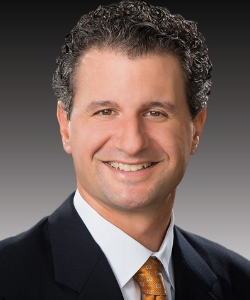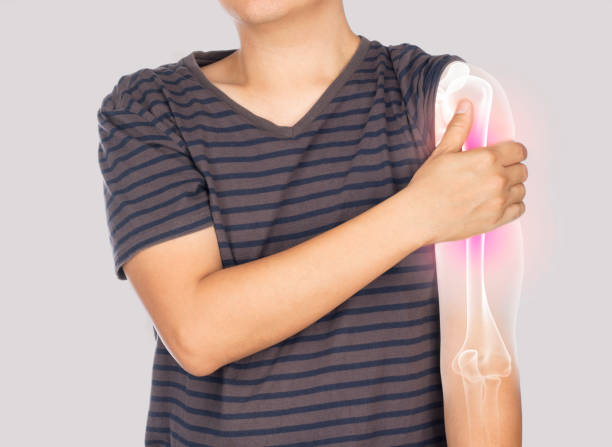What is a trigger finger?
A trigger finger is a condition in which the tendons in the fingers or thumb get inflamed, making it difficult to straighten or bend the affected digit.
A trigger finger is a condition that causes discomfort and stiffness in the finger or thumb, making it difficult to straighten or bend the affected site. It occurs due to the inflammation of the tendons controlling the finger or thumb movement.
Trigger finger is a common health issue, affecting over 200,000 individuals in the United States annually. If you suspect you have this condition, get an expert diagnosis from board-certified surgeons at Sforzo, Dillingham, Stewart Orthopedics + Sports Medicine.
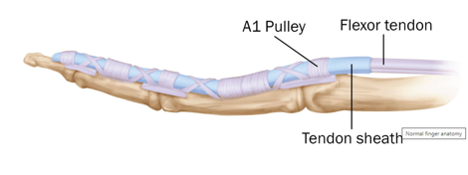 When your finger’s tendon sheath gets inflamed, this affects the tendon’s gliding movement through the sheath, leading to a trigger finger. Bumps, thickening, and scarring from continued irritation can further interfere with the tendon’s movement.
When your finger’s tendon sheath gets inflamed, this affects the tendon’s gliding movement through the sheath, leading to a trigger finger. Bumps, thickening, and scarring from continued irritation can further interfere with the tendon’s movement.
Here are trigger finger causes and risk factors:
Medical Conditions
Certain medical conditions can cause a trigger finger. For example, individuals with diabetes are more susceptible to a trigger finger due to the damage high blood sugar levels can cause to the nerves and hand blood vessels.
Rheumatoid arthritis is also one of the risk factors for a trigger finger. This systemic autoimmune disorder affects the joints, tendons, and ligaments. It leads to inflammation, which can damage the tendons in your hand, making them more prone to a trigger finger.
Forceful Hand Activities
 Repetitive motions are one of the primary causes of a trigger finger. They involve gripping or grasping and put a lot of stress on the tendons in the fingers and thumb. This causes inflammation and stiffness.
Repetitive motions are one of the primary causes of a trigger finger. They involve gripping or grasping and put a lot of stress on the tendons in the fingers and thumb. This causes inflammation and stiffness.
Individuals who engage in repetitive movements as part of their job or hobby are at an increased risk. These include musicians, carpenters, and assembly line workers.
Age
As you age, your tendons and ligaments lose elasticity and strength, making them more prone to injury and inflammation. Aging increases the risk of certain medical conditions that can lead to trigger a finger, such as arthritis and diabetes.
These conditions cause inflammation and damage to the tendons in the fingers and thumb. They make it more difficult for the affected digit to move smoothly and easily, leading to stiffness and pain. This explains why trigger finger is more prevalent in individuals aged 40-60.
Trigger finger is characterized by hand-palm discomfort, soreness, finger swelling, and finger pain. While some patients may not have pain, the condition causes finger stiffness. This happens mostly after prolonged inactivity. Symptoms to watch out for include:
Loss of Motion or Stiffness
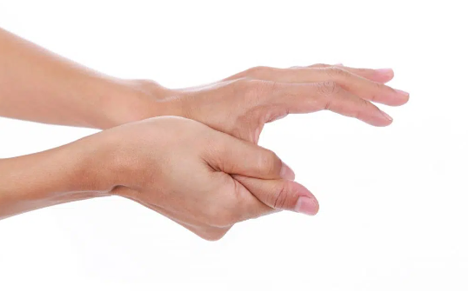 The inflammation and stiffness in the tendons make it difficult to bend or straighten your affected digit. This symptom is more pronounced in the morning when you attempt to move the finger as the tendons and surrounding tissues become more inflamed at night.
The inflammation and stiffness in the tendons make it difficult to bend or straighten your affected digit. This symptom is more pronounced in the morning when you attempt to move the finger as the tendons and surrounding tissues become more inflamed at night.
Pain
When you have a trigger finger, the initial symptom may be discomfort at the affected finger’s base. You feel pain when performing certain activities, such as gripping. Over time, pain and pressure may occur without grasping an object.
Mechanical Symptoms
A trigger finger can lead to abnormal movement or sensations described as locking, catching, or popping. These may happen when straightening or bending your finger or thumb. Early symptoms include mild pain, which increases over time.
Medication is one of the primary trigger finger treatment options you may consider. It involves Non-Steroidal Anti-Inflammatory Medication (NSAIDs), including naproxen sodium (Aleve) and ibuprofen (Motrin IB, Advil).
 At Sforzo, Dillingham, Stewart Orthopedics + Sports Medicine, our experienced surgeons prioritize non-surgical trigger finger treatment. If non-invasive techniques are the best options for you, our medical experts will advise you on the best practices for trigger finger treatment.
At Sforzo, Dillingham, Stewart Orthopedics + Sports Medicine, our experienced surgeons prioritize non-surgical trigger finger treatment. If non-invasive techniques are the best options for you, our medical experts will advise you on the best practices for trigger finger treatment.
Here are common trigger finger treatment methods, depending on your needs:
If finger overuse at home or work leads to your trigger finger, resting your hand can offer relief. Avoid prolonged use of handheld vibrating equipment for about four weeks. If you cannot take a break from your work, wear padded gloves as they can reduce strain on your fingers.
A splint holds your thumb or finger, preventing motion. During the night, wear a splint to minimize finger stiffness in the morning. This technique provides short-term relief.
A trigger finger impacts your range of movement, meaning stretching exercises on your finger can enhance flexibility and help with pain relief. Spend 15 minutes daily performing simple practices, such as palm presses. Common trigger finger exercises include:
Finger Extension
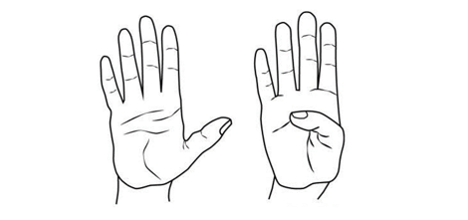
Finger Flexion
Finger Abduction:
Finger Circle
Medication is best for first-time trigger finger patients. This can be effective when combined with activity modification, splinting, and physical therapy. During your initial consultation with our surgeons, they will evaluate your specific needs for customized recommendations.
Our medical professional may recommend corticosteroid injections if your trigger finger symptoms don’t improve using the above treatment methods. This also applies to patients with severe symptoms.
These synthetic drugs suppress inflammation and relieve symptoms of conditions such as allergies and rheumatoid arthritis. 83% of trigger finger patients experience relief following corticosteroid injections.
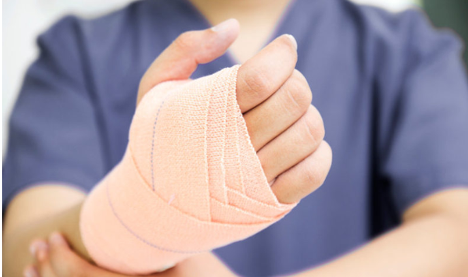 Trigger finger surgery helps to increase space, enhancing your flexor tendon motion. After the procedure, you can straighten and bend your finger without pain. To qualify for surgery as a treatment for the trigger finger, you must be in good health and experiencing severe symptoms.
Trigger finger surgery helps to increase space, enhancing your flexor tendon motion. After the procedure, you can straighten and bend your finger without pain. To qualify for surgery as a treatment for the trigger finger, you must be in good health and experiencing severe symptoms.
The procedure takes about 15 minutes, and our surgeon performs it under local anesthesia. The surgeon makes a small incision in the skin near the base of the affected finger. They use a small instrument to release the constricted tendon sheath, allowing your tendons to glide freely.
After the surgery, the surgeon wraps your finger in a bandage for a few days to reduce swelling. You will need appropriate self-care for trigger fingers to regain movement. Most individuals can resume their daily activities in about two weeks.
We consider trigger finger surgery a safe and effective procedure. Still, like any surgical procedure, it comes with potential complications, including
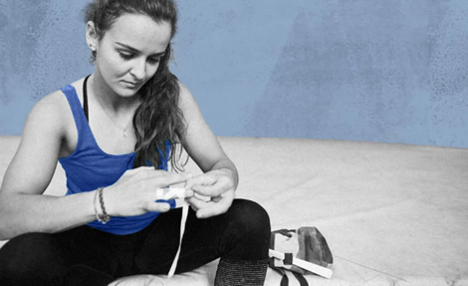 Regardless of the risk factors for a trigger finger, taking the right measures to prevent the condition should be a priority, especially if you’re at an increased risk. At Sforzo, Dillingham, Stewart Orthopedics + Sports Medicine, our board-certified doctors recommend the following:
Regardless of the risk factors for a trigger finger, taking the right measures to prevent the condition should be a priority, especially if you’re at an increased risk. At Sforzo, Dillingham, Stewart Orthopedics + Sports Medicine, our board-certified doctors recommend the following:
A trigger finger is a condition in which the tendons in the fingers or thumb get inflamed, making it difficult to straighten or bend the affected digit.
Trigger finger symptoms may include
If the non-surgical treatments don’t work for you, our surgeons may recommend trigger finger surgery. The procedure helps to release tendon construction, eliminating pain and allowing proper motion.
As healthcare is ever changing, Sforzo | Dillingham | Stewart Orthopedics + Sports Medicine, is doing things differently…
